Bolshoi Theatre
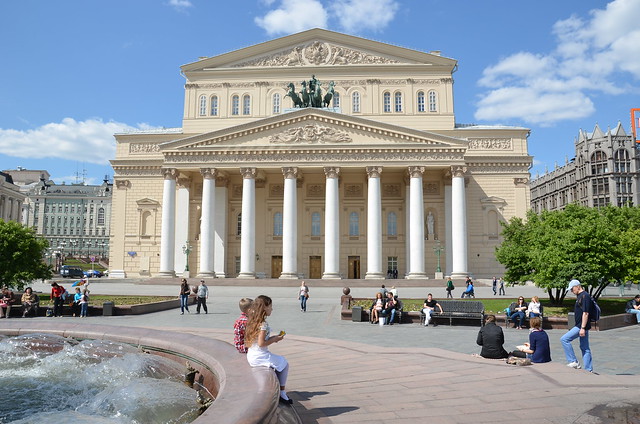 flickr/Robert Nyman
flickr/Robert Nyman
Rebuilt and renovated multiple times over its long history, the
Bolshoi Theatre in Moscow began life as an unimpressive brick and stone
structure built in the 1790s. The current building was designed by
architect Andrei Mikhailov and completed in 1824. The Neoclassical
theater is richly appointed with Oriental carpets, silk-damask-covered
walls and velvet-upholstered chairs. Smaller than many major opera
houses, the four balconies and gallery that encircle the orchestra
seating make for an intimate experience. A 2011 renovation, rumored to
have cost up to one billion dollars, greatly improved the theater’s
acoustics.
9Hungarian State Opera House
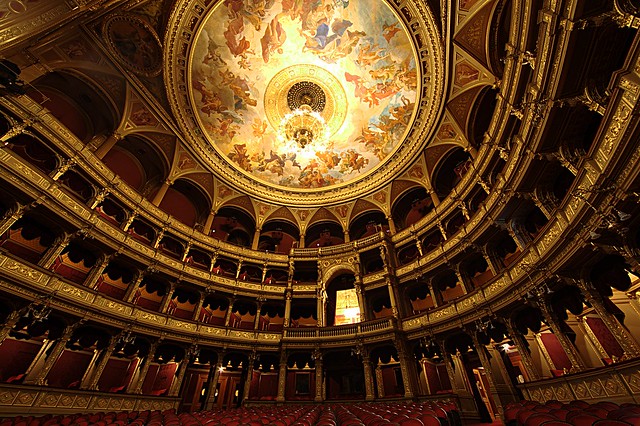 flickr/jasongerardderose
flickr/jasongerardderose
Designed by Mikós Ybl and completed in 1884, the Hungarian State
Opera House in Budapest is considered the Hungarian architect’s finest
accomplishment. The Neo-Renaissance structure is decorated with
paintings and sculptures created by the country’s most-acclaimed artists
and features a massive chandelier crafted in bronze. Statues of Franz
List and Ference Erkel flank the theater’s entrance. Known for its great
acoustics, the theater has attracted world-renowned composers,
including Gustav Mahler and Otto Klemperer.
8Metropolitan Opera House
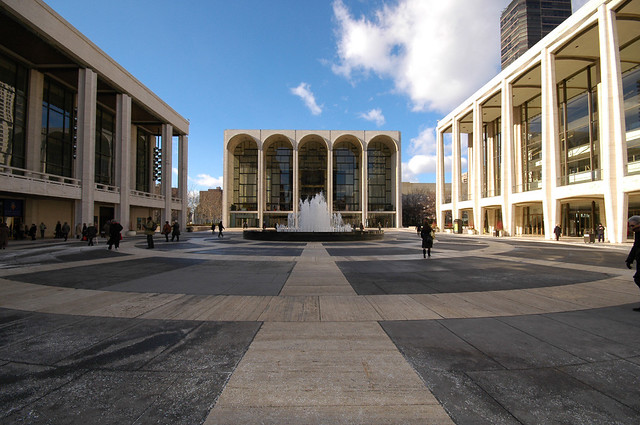 flickr/Listen Missy!
flickr/Listen Missy!
Known simply as the “Met” by opera lovers all over the globe, the
Metropolitan Opera House at Lincoln Center in New York City is as famous
for its elaborate and innovative productions as it is for commanding
performances by the world’s most accomplished opera singers. For its
excellent acoustics and great sight lines, the Met has been acknowledged
as a premier opera house since it opened in 1966. Designed by architect
Wallace K. Harrison, the theater’s modern design features a white
travertine façade with a series of grand arches.
7Teatro Colon
 flickr/Gobierno de la Ciudad de Bueno
flickr/Gobierno de la Ciudad de Bueno
Opened in 1908 with a performance of Verdi’s “Aïda,” the Teatro Colón
in Buenos Aires was designed by a succession of architects, which may
explain the structure’s eclectic style. With nearly 2,500 seats and
standing room for 1,000 people, the Teatro Colón stood as the world’s
largest opera house until the completion of the Sydney Opera House in
1973. Famed tenor Luciano Pavarotti praised the theater for its perfect
acoustics, noting that this attribute doesn’t always bode well for the
singer. “If one sings something bad,” he said, “one notices
immediately.”
6Teatro di San Carlo
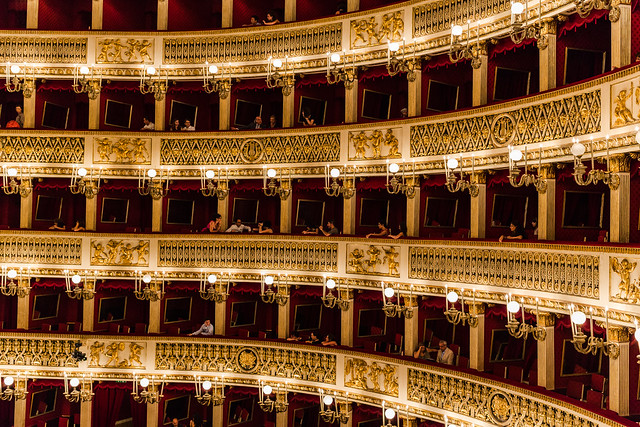 flickr/icathing
flickr/icathing
The Real Teatro di San Carlo in Naples holds the title as the oldest
continuously active opera house in Europe. Built by King Charles of
Bourbon, the red-and-gold theater is connected to the Royal Palace.
Completed in 1737, the opera house established a standard that
subsequent architects would strive to follow. Six tiers of box seating
surround the horseshoe-shaped orchestra seats, with an extravagantly
decorated royal box jutting out in the rear of the house. A
multi-million dollar renovation of the theater was completed in 2010.
5Vienna State Opera
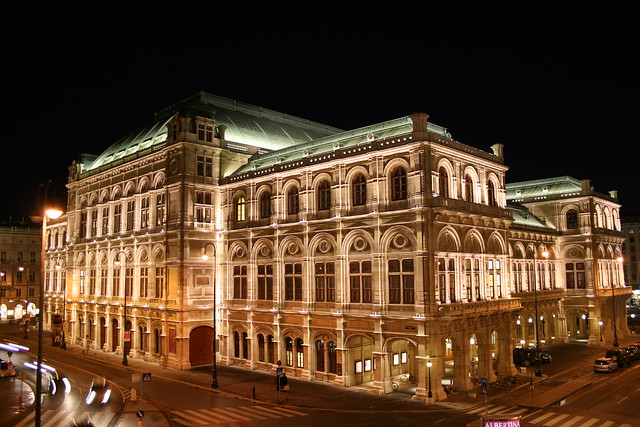 flickr/infraredhorsebite
flickr/infraredhorsebite
The Vienna State Opera House, more commonly known as the Staatsoper,
opened in 1869 with a performance of Mozart’s “Don Giovanni.” Designed
by architects Eduard van der Nüll and August Sicard von Sicardsburg in
the Neo-Renaissance style, the theater was partly destroyed by bombs
during World War II and was not completely restored until 1955. The
state opera’s musicians are just as prized as the singers; the
world-renowned Vienna Philharmonic recruits its members from the
company’s orchestra. The theater is known both for its many children’s
productions and for its affordable standing-room-only tickets that
theater-goers snatch up minutes before a performance.
4Teatro Amazonas
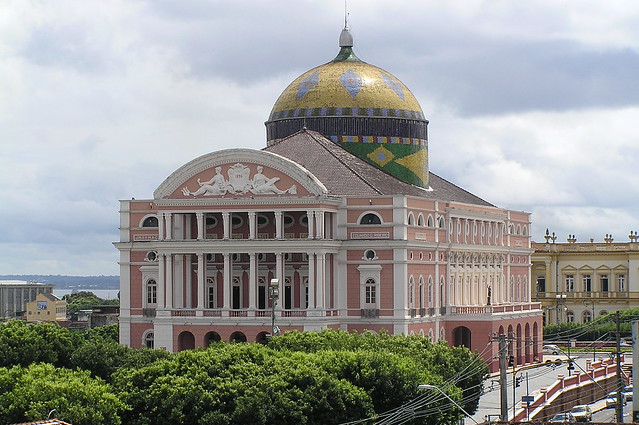 flickr/Papa Goiaba
flickr/Papa Goiaba
Teatro Amazonas or Amazon Theatre is an opera house located in
Manaus, in the heart of the Amazon Rainforest. It was built during the
heyday of rubber trade using materials from all over the world, with
furniture from Paris, marble from Italy, and steel from England. On the
outside of the building, the dome was covered with 36,000 decorated
ceramic tiles painted in the colors of the Brazilian national flag. The
first performance was given in 1897, with the Italian opera La Gioconda.
The opera house was closed down soon after however as the rubber trade
declined and Manaus lost its main source of income. There wasn’t a
single performance in Teatro Amazonas for 90 years until 2001 when the
Teatro Amazonas reopened its doors.
3La Scala
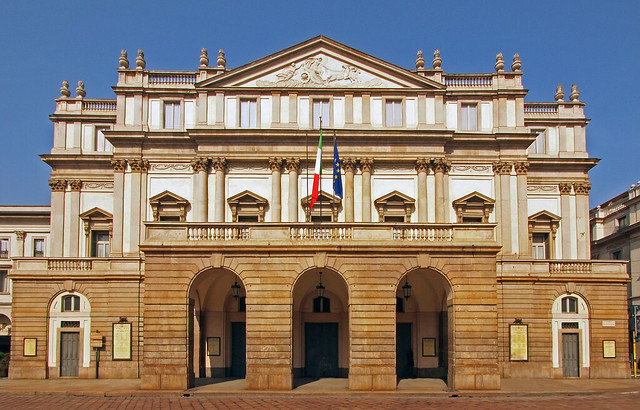 flickr/John Picken
flickr/John Picken
Milan’s Teatro alla Scala, or La Scala as its known the world over,
has enjoyed a reputation as a premier opera house since its first
performance of “L’Europa Riconosciuta,” by Antonio Salieri, in 1778.
Designed in the Neoclassical style by architect Giuseppe Piermarini, the
red-and-gold theater is famous for its superb acoustics, which reveal
the true abilities of a singer so accurately that a performance at La
Scale is viewed as a trial by fire. Even artists of the highest stature
have experienced heckling whistles from critics seated in the loggione,
the gallery above the theater’s boxed seats.
2Palais Garnier
 flickr/Peter Rivera
flickr/Peter Rivera
The Palais Garnier on the Avenue de l’Opéra in Paris is likely among
the best known opera house in the world, partly because the theater was
used as the setting for the novel and subsequent musical, “The Phantom
of the Opera.” Designed by architect Charles Garnier and completed in
1875, the Beaux-Arts style opera house features a massive seven-ton
crystal chandelier in the center of the theatre, highly ornate marble
friezes and statues depicting figures from Greek mythology. In 1962,
Marc Chagall added frescoes to the ceiling. While prized for its beauty,
the theater is notorious for its poor sight lines, and the Paris Opera
now uses the newer Place de la Bastille for most of their performances.
1Sydney Opera House
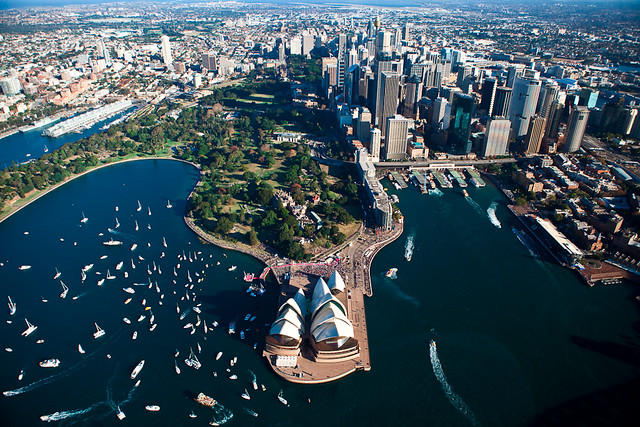 flickr/Pavel Sigarteu
flickr/Pavel Sigarteu
One of Australia’s famous landmarks, the Sydney Opera House is one of
the world’s most prestigious performing arts centers. Regarded as a
20th century architectural masterpiece, the Sydney Opera House was
designed and built by architect, Jørn Utzon, to reflect the image of a
huge sailing ship. Though the name suggests it is used only as an opera
house, the project comprises multiple performance venues. Of the many
venues housed within the structure, some of the most significant are the
Joan Sutherland Theatre, Drama Theatre, the multi-purpose Utzon Room
and the Concert Hall, which houses the largest mechanical tracker-action
organ in the world. Also part of the Sydney Opera House is the
Forecourt, an open-air venue presenting many outdoor performances.
 flickr/Robert Nyman
flickr/Robert Nyman flickr/jasongerardderose
flickr/jasongerardderose flickr/Listen Missy!
flickr/Listen Missy! flickr/Gobierno de la Ciudad de Bueno
flickr/Gobierno de la Ciudad de Bueno flickr/icathing
flickr/icathing flickr/infraredhorsebite
flickr/infraredhorsebite flickr/Papa Goiaba
flickr/Papa Goiaba flickr/John Picken
flickr/John Picken flickr/Peter Rivera
flickr/Peter Rivera flickr/Pavel Sigarteu
flickr/Pavel Sigarteu
No comments:
Post a Comment